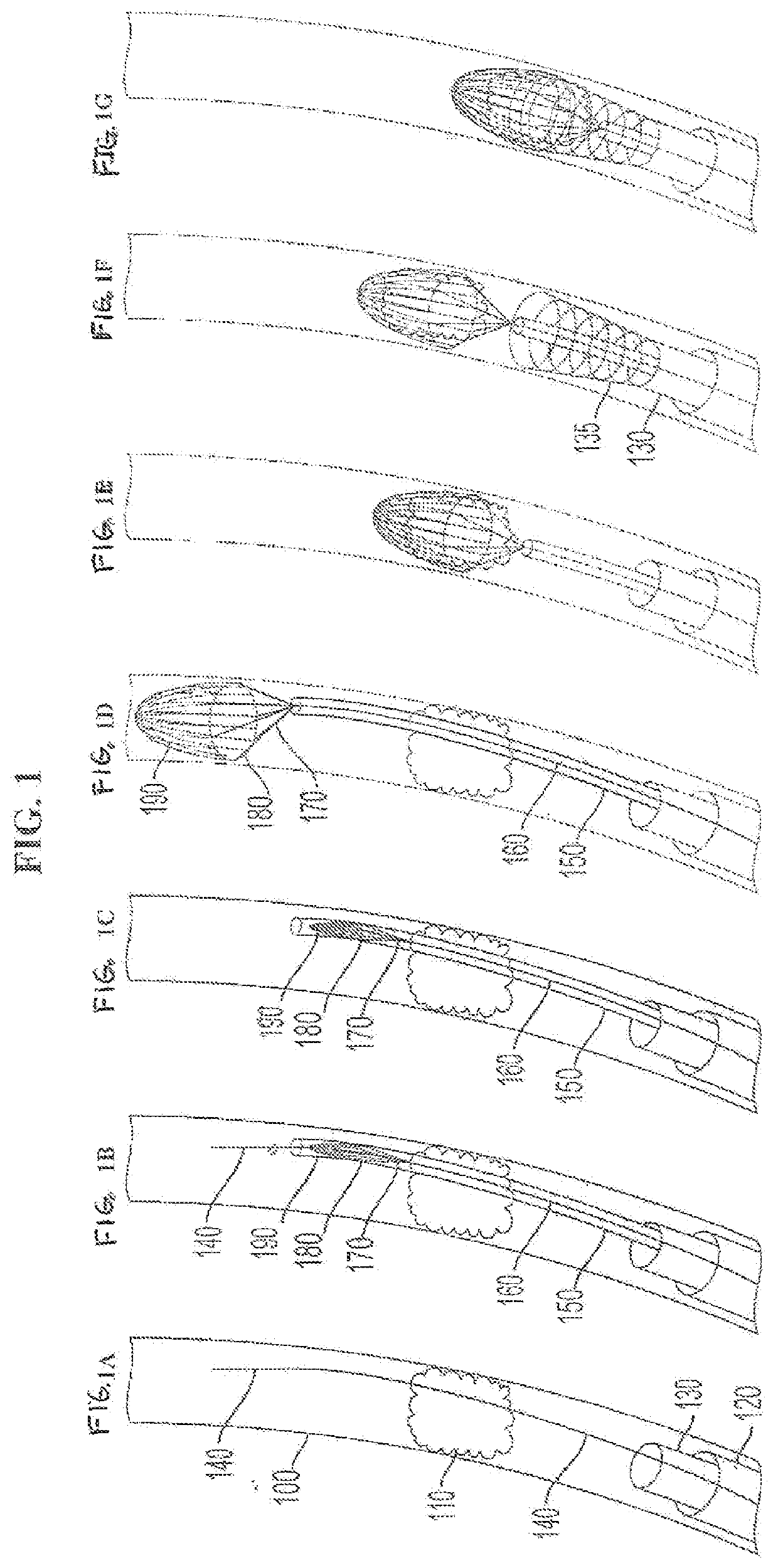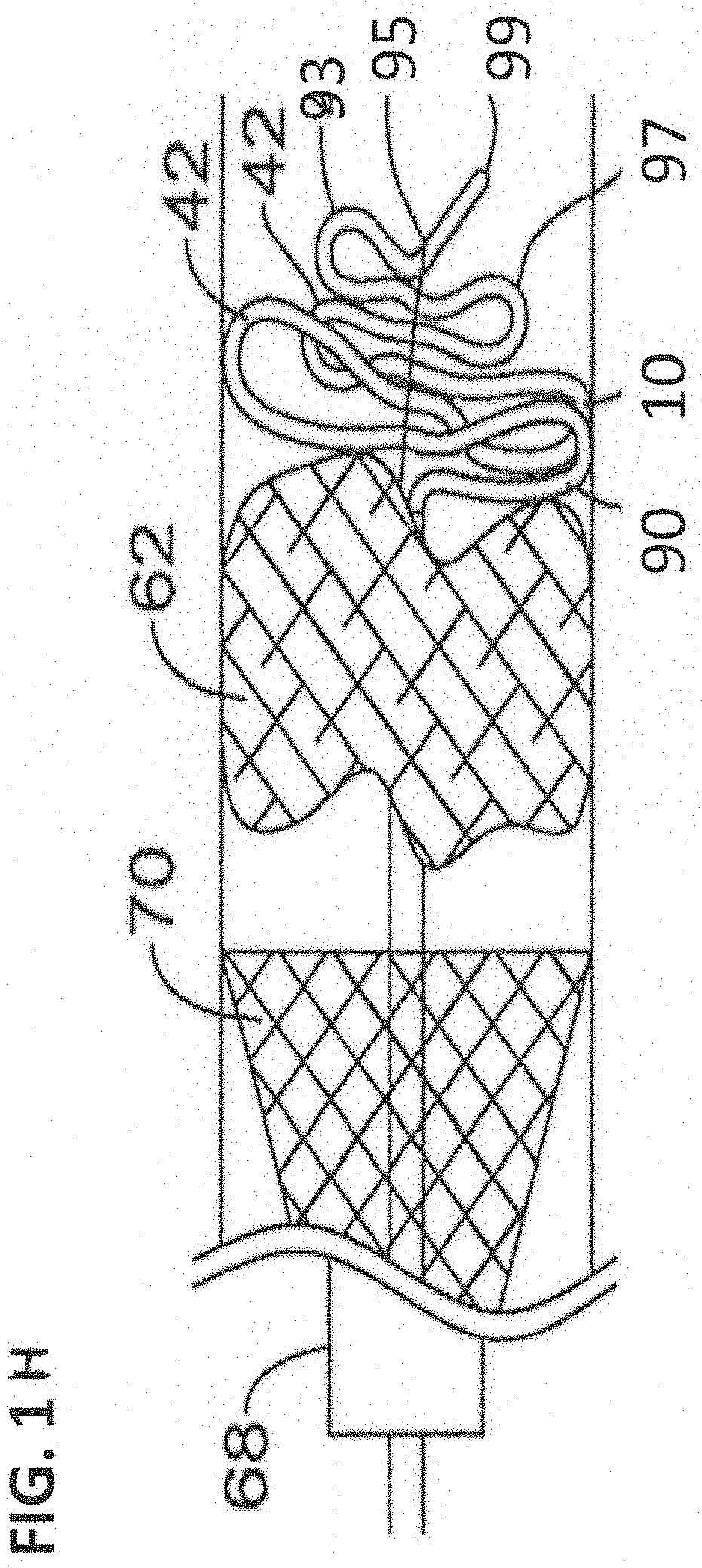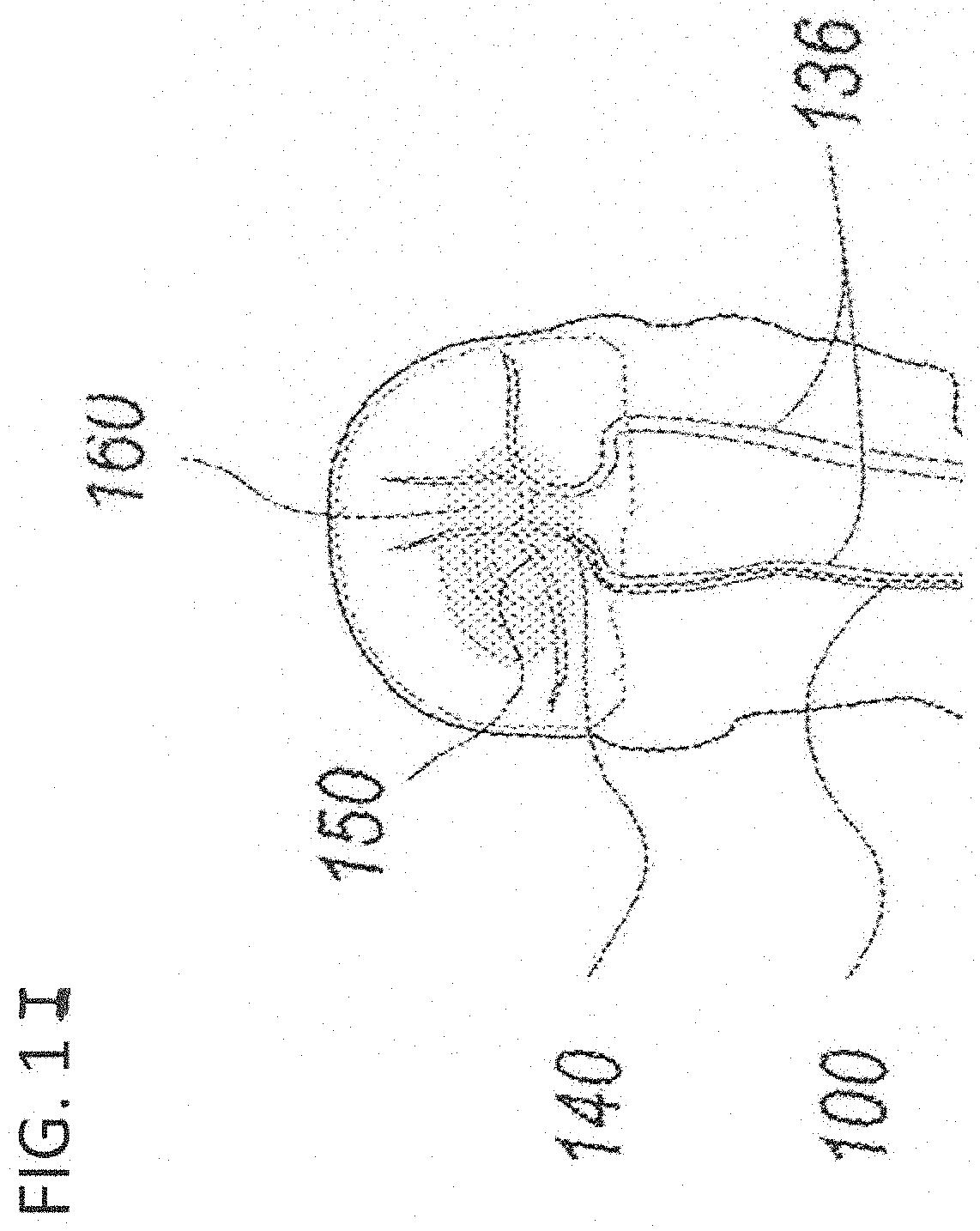Device and method for treatment of deep vein thrombosis and pulmonary embolism
a deep vein thrombosis and pulmonary embolism technology, applied in the field of intravascular medical devices, can solve the problems of myocardial infarction, pain, swelling, and wounds that cannot heal, and achieve the effects of safe and complete removal of large clots, reducing the risk of fragmentation and distal embolization, and increasing the first-pass recanalization ra
- Summary
- Abstract
- Description
- Claims
- Application Information
AI Technical Summary
Benefits of technology
Problems solved by technology
Method used
Image
Examples
Embodiment Construction
[0058]This disclosure provides design, material, manufacturing method, and use alternatives for medical devices and systems. The device for treating DVT and PE comprises accessing a venous blood vessel of a patient in which a retraction catheter is inserted to a site of clot. An aspiration catheter with wall-mounted suction may be attached to remove a vascular obstruction with one pass. Aspiration may be applied to the guiding or collecting catheters to decrease embolization of clot fragments. An intravascular thrombus retraction device includes wires that are compressible into a compact cylindrical form within a catheter and which are self-expandable into a wire mesh web with at least some parallel wires forming openings in the wire mesh sufficient to allow fluid passage and small enough to filter particles of at least 0.001 mm, a base of the wire mesh web connected to radial ring-shaped structure supporting and maintaining an opening in the base of the wire mesh and forming a thro...
PUM
 Login to View More
Login to View More Abstract
Description
Claims
Application Information
 Login to View More
Login to View More - R&D
- Intellectual Property
- Life Sciences
- Materials
- Tech Scout
- Unparalleled Data Quality
- Higher Quality Content
- 60% Fewer Hallucinations
Browse by: Latest US Patents, China's latest patents, Technical Efficacy Thesaurus, Application Domain, Technology Topic, Popular Technical Reports.
© 2025 PatSnap. All rights reserved.Legal|Privacy policy|Modern Slavery Act Transparency Statement|Sitemap|About US| Contact US: help@patsnap.com



